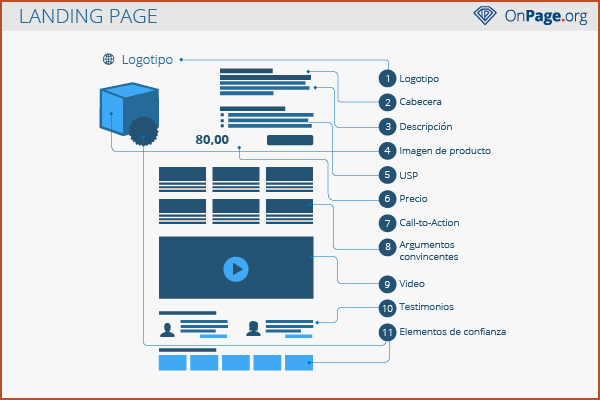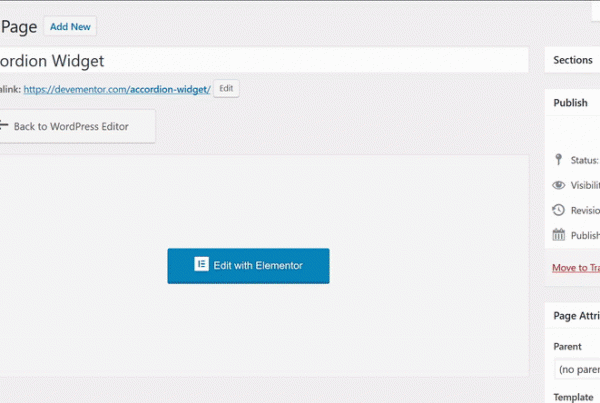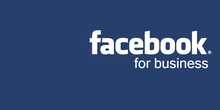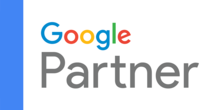A landing page, or landing page, is a page that contains information and is created specifically for an advertising campaign. The landing pages They are essential for advertising campaigns in any area of Online Marketing, such as E-Mail Marketing, Display Marketing and SEO. The main characteristic of landing pages it is the original presentation of content and design that make the advertising campaign successful.
General information
A landing page It cannot be considered part of the web portal since it has a totally separate structure from it. In general, it is not feasible to enter the landing pages through public websites as they are created primarily to get the most out of advertising campaigns. The landing pages They are very interesting to increase conversion since they encourage users to take an action - increase Conversion. By action we understand subscribing to a newsletter, filling in a form, downloading a software or purchasing a product.
The difference between a conventional web portal and a landing page is that the landing page It works as a Marketing tool without containing any type of banner or advertisement. That is why they are not created or optimized in relation to specific keywords, but have the sole objective of generating conversion.
The landing pages They also serve to generate “potential customers”. A potential customer is a visit to your web portal that came in because they were interested in the ad and left their contact details. From this dynamic, increasing the conversion is usually quite simple since, normally, an interested user usually ends up buying more easily if the landing page takes you to the product of interest and the offer is good enough.
An important characteristic of landing pages is the opportunity for interaction offered to users through, for example, contact forms or buttons "buy now". In all aspects of the content, structure and design it must be clear that the landing page aims to guide and help the user.
Important items
A landing page use various items to keep the user's concentration. The image below shows the important items on, for example, a product page.
Types
Standard landing page
There are many different ways to define a landing page. Can be established landing pages of product pages or categories that have a link to the advertising campaign. Despite everything, experts recommend that landing pages are independent of specific commercial promotion campaigns. One of the main mistakes is creating an AdWords campaign with a banner that connects to the landing page to attract visitors.
It is recommended to always respect the instructions of Google and take into account the landing pages of the landing pages. For example, if it connects with malware or something similar, the page will be blocked by Google. At the same time Google qualifies the landing pages based on factors such as user experience and the relevance of the keywords used.
Microsites
Another variant of a landing page It is the Microsite that is integrated in a totally independent way to the web portal. This type of landing pages It has a particular goal: to serve as a support for conversion. On these pages you will find items such as product features and contact forms. Special attention should be paid to the action items, Call to Action, since they redirect the user to another page. The title of a Microsite landing page it should be geared towards conversion. For the best results of the campaign, the design of the landing page and that of the ad campaign should be aligned so that it can be easily recognized.
Landing page optimization
The optimization of landing pages must have as main objective to increase the conversion or reduce the Bounce Rate, known in English as Bounce Rate, that is to say, that the visitors leave the web portal after a few seconds.
The information must be present in a clear and simple way so that the message to be transmitted reaches the user easily. The content of the advertising message can also be optimized with the use of keywords focused on possible advertising campaigns in AdWords, for example. Keywords must be placed in both content and titles. In this way, users and search engines receive information and semantic signals.
Contact forms or purchase buttons can be integrated but references should be avoided, since they can distract the user and cause them to leave the offer. For this reason, it is recommended to integrate items that provide clear information and show the user why this product / offer is perfect for him. Many entrepreneurs intend to cause a surprise effect on the user so that, therefore, the user is excited about the product and buys it. To conclude, items of "Call to Action", or call to action that leads the user to complete the purchase and generate the conversion.
Another common method to get the most out of your web portal in a sustainable and lasting way is through Website Testing, web portal analysis, through processes such as A / B Testing. In this circumstance two different versions of one are created landing page and the version that users liked the most is chosen (Eg it is measured by, for example, the number of people who have registered, that is, based on the conversion). Another method is the Multivariate analysis, known in English as Multivariate Testing.
Web links
- 6 characteristics of a perfect landing page (with examples) Blog 40defiebre.com
- 9 Keys to perfectly design a Landing Page that generates Online Sales Blog webempresa20.com






